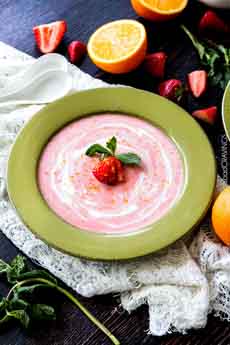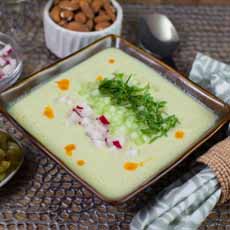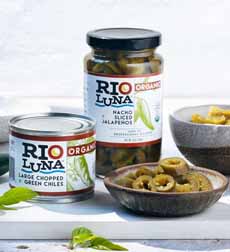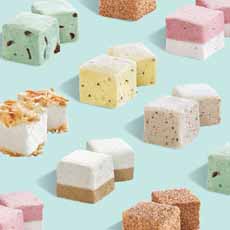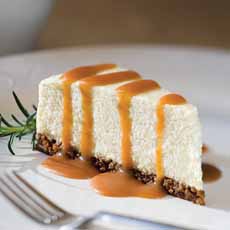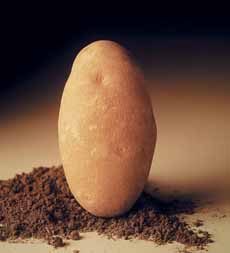|
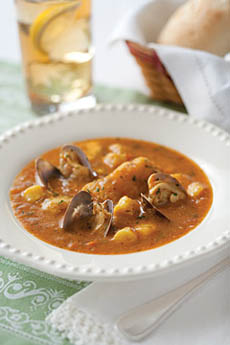
[1] Bouillabaisse, a fish soup or stew from Marseille (photo courtesy Mackenzie Ltd).
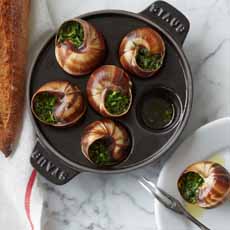
[2] Escargots, a delicacy of snails in garlic and parsley butter (photo courtesy Williams Sonoma).
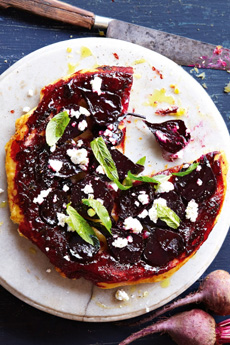
[3] Tarte tatin (photo courtesy Taste.com.au).

[4] Ratatouille with a fried egg (photo courtesy Elegant Affairs Caterers).
| |
July 14th is Bastille Day, the national day of France, commemorating the storming of the Bastille on 14 July 1789, a turning point of the French Revolution.
Make it an annual celebration of French food and wine. Here are the top 25 French dishes.
Baeckeoffe: a casserole from the French region of Alsace, which is situated on the border with Germany. In the Alsatian dialect, Baeckeoffe means “baker’s oven.” The recipe includes cubed mutton, beef, and pork, Alsatian white wine, potatoes, onions, leeks, thyme, parsley, garlic, carrots and marjoram.
Blanquette de veau: a veal ragout in which neither the veal nor the butter is browned in the cooking process, which keeps the veal white (en blanquette).
Boeuf Bourguignon: a beef stew braised in red wine (named for red Burgundy) and beef broth, with carrots, onions and garlic, cooked with a bouquet garni and garnished with pearl onions, mushrooms and bacon.
Bouillabaisse: a traditional Provençal fish stew originating in the port city of Marseille (photo #1).
Cassoulet: a rich, slow-cooked casserole containing meat, pork skin and white beans, originating in the south of France.
Coq au vin: chicken braised with wine, lardons, mushrooms and garlic.
Croque madame: a variation of croque monsieur (below), topped with a fried egg.
Croque monsieur: a sandwich of baked or fried boiled ham and gruyère cheese. The dish originated in French cafés and bars as a quick snack. A croque madame is a
Duck confit: the duck is cooked in its own fat, for extra richness. It is from the Gascony region.
Escargots: snails in garlic-parsley butter (photo #2).
Gougère: a baked savory choux pastry made of choux dough (like cream puffs), mixed with gruyère cheese.
Gratin dauphinois: a dish of sliced potatoes baked in milk, from the Dauphiné region of southeast France.
Moules marinères: Mussels cooked in butter, wine and shallots with thyme.
Mousse: a frothy whipped dish of cream and flavors that can be served as a savory dish as well as a sweet dessert.
Pan bagnat: is a specialty of the Provence region of France, composed of pain de campagne (whole wheat bread formed in a circle), around a classic salade niçoise—raw vegetables, hard boiled eggs, anchovies and/or tuna, olive oil, and sometimes balsamic vinegar.
Piperade: a sautéd vegetable dish from the Basque area, prepared with onion, green peppers, and tomatoes and flavored with red espelette pepper.
Pissaladière: a flatbread, usually rectangular, with a traditional topping of caramelized onions, black olives, and anchovies—whole, and sometimes also with pissalat, a type of anchovy paste. It originated in Nice, in Southern France.
Pistou: a Provençal vegetable soup into which pistou (a cousin of Italian pesto), is stirred just before serving.
Quiche: a savory flan (custard) consisting of a pastry crust filled with eggs, milk or cream, plus cheese, meat, seafood or vegetables.
Ratatouille: a Provençal stewed vegetable dish of eggplant, tomato and zucchini, originating in Nice (photo #4).
Salade niçoise: From the city of Nice, a salad with local lettuce, tomatoes, hard-boiled eggs, niçoise olives and anchovies, dressed with olive oil.
Sole meuniere: A whole sole or fillet, dredged in flour, pan fried in butter and served with the resulting brown butter sauce, parsley and lemon.
Soupe à l’oignon: onion soup topped with melted gruyere
Steak tartare: raw ground meat mixed with chopped raw onions, capers, Worcestershire sauce, ground pepper and other seasonings,
Tarte tatin: Named after the hotel run by the Tatin sisters, who created it as an upside-down pastry in which the fruits are caramelized in butter and sugar before the tart is baked (photo #3).
READY TO PARTY?
Whip up something for today, and plan a co-op celebration for next year.
By co-op, we mean inviting friends to share in making the food. Those who can’t cook can certainly find their way to the French wine section of the nearest liquor store.
And someone can put together a mix tape of French popular music: Charles Aznavour, Jacques Brel, Serge Gainsbourg, François Hardy, and the immortal Edith Piaf.
|
